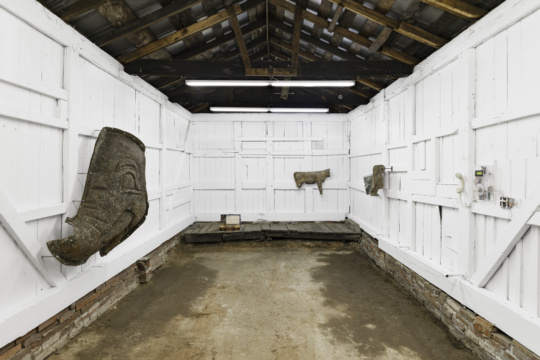
Dear BURNAWAY,
I don’t know how much you can help me with this, but I’m going to put it out there anyway. I’m an undergraduate in painting and I’m approaching my final semester. While I feel like I’ve come so far over the last several years, I can’t get over the fact that deep down, when I look at my pieces, they seem so derivative. When I look at them, all I can see is what I’ve stolen from other people. Even though others say they don’t notice, I do, and it makes me feel like a fraud, like I should quit painting altogether. I’m just stealing everyone else’s ideas because I don’t have any good ones of my own. I don’t blatantly rip people off, it’s subtle, but it’s like every time I come up with a “new idea” I realize later that it’s actually something I saw online or in some museum show a few years ago. Should I just own up to it? Quit painting? I don’t know how to reconcile any of it. So, I guess, my question is: what can I do to be more original?
Thanks,
Copy-cat in Atlanta
Dear Copy-cat,
First, take a deep breath, and from this moment on, you’re going to stop being so hard on yourseIf. Okay? Okay. It’s easier said than done, I know, but you’ve got to try, pumpkin. I think it’s pretty fair to say that all creatives steal at some point in our careers. In my experience, most people go through a, for lack of a better term, “fake it til you make it” stage. But it’s through imitating and echoing the artists whom they admire, that they eventually stumble upon their own voice. It is what artistic training is all about. You don’t saddle up to your first canvas with your own, finely tuned aesthetic. You have to build it, and part of building it involves emulation. Some people emulate obscure artists, some emulate masters — either way, it’s all coming from the same striving spirit of self-discovery.
A young Steve Jobs used to strut around quoting the Picasso line, “Good artists copy, great artists steal.” It’s a decent, albeit pithy, notion. Copying someone else’s work sucks, like how Urban Outfitters continually rips off independent designers. However, stealing a technique, applying it to your work, and making your own has always been part of the art game. People have been painting for a long ass time; one can’t help but “steal” from such an expansive catalogue of ideas.

Speaking of stealing ideas, there’s a hilarious sketch in the new season of Portlandia in which Simpsons creator Matt Groening takes Spyke, played by Fred Armisen, to court over his “Bart Ska-mpson” T-shirt design. A court battle ensues as they try to determine who made the design first. I won’t tell you how it ends, you should watch it sometime. It’s on Netflix.
I bring it up because this battle of authorship has always been an issue in the visual art world, from whether Picasso or Braque started Cubism to the lawsuits against Richard Prince’s Instagram photographs. Trying to pinpoint the beginning of an “original” idea is murky, and it always has been.
I think we can all agree on one thing though: don’t rip people off. That said, is it possible to demand all artists not take ANYTHING from one another? I don’t think so at all.
As an artist, you stand on the shoulders of your forebears whether you like it or not. You are in a larger dialogue with your peers, whether you like it or not. If you use something, acknowledge it! If you incorporate a Richteresque paint-pull gesture in your work, that’s great! But don’t act like you’re the first artist to do that. Be willing to say, “This is a nod to Richter,” or whomever it might be in your case. Be open about your influences, it only adds depth and intrigue to the work. Naturally, there is a limit to how much you can incorporate, of course. You don’t want your work to be a lousy vacant collage of art history’s smartest moments. Pick and choose carefully, and be sure make it your own.

While I can’t tell you how to be original, I can share with you some words I try to keep in my mind pocket. My main man Henry Miller, author of the chaotically beautiful Tropic of Cancer, a book that has saved me from myself more than a few times, was in your shoes before he wrote that masterpiece. Back in September 1961, in London, he was interviewed for Paris Review. (PS: I always pretend it’s Ol’ Grandpa Henry speaking directly to me. I encourage you to do the same.) Here’s what he said:
“It happened for me with Tropic of Cancer. Up until that point you might say I was a wholly derivative writer, influenced by everyone, taking on all the tones and shades of every other writer that I had ever loved. I was a literary man, you might say. And I became a non-literary man: I cut the cord. I said, I will do only what I can do, express what I am—that’s why I used the first person, why I wrote about myself. I decided to write from the standpoint of my own experience, what I knew and felt. And that was my salvation.”
I think that’s the salvation we are all looking for, that moment where we feel artistically unclothed, found, where we can finally recognize ourselves in our work. I think your relief, my darling, will come when you have your own breakthrough. When you finally see how to paint from the standpoint of your own experience, and express what you are, and do what only you can do. I don’t know when that time will come, but you have to, as they say, paint like a motherfucker until it does.




